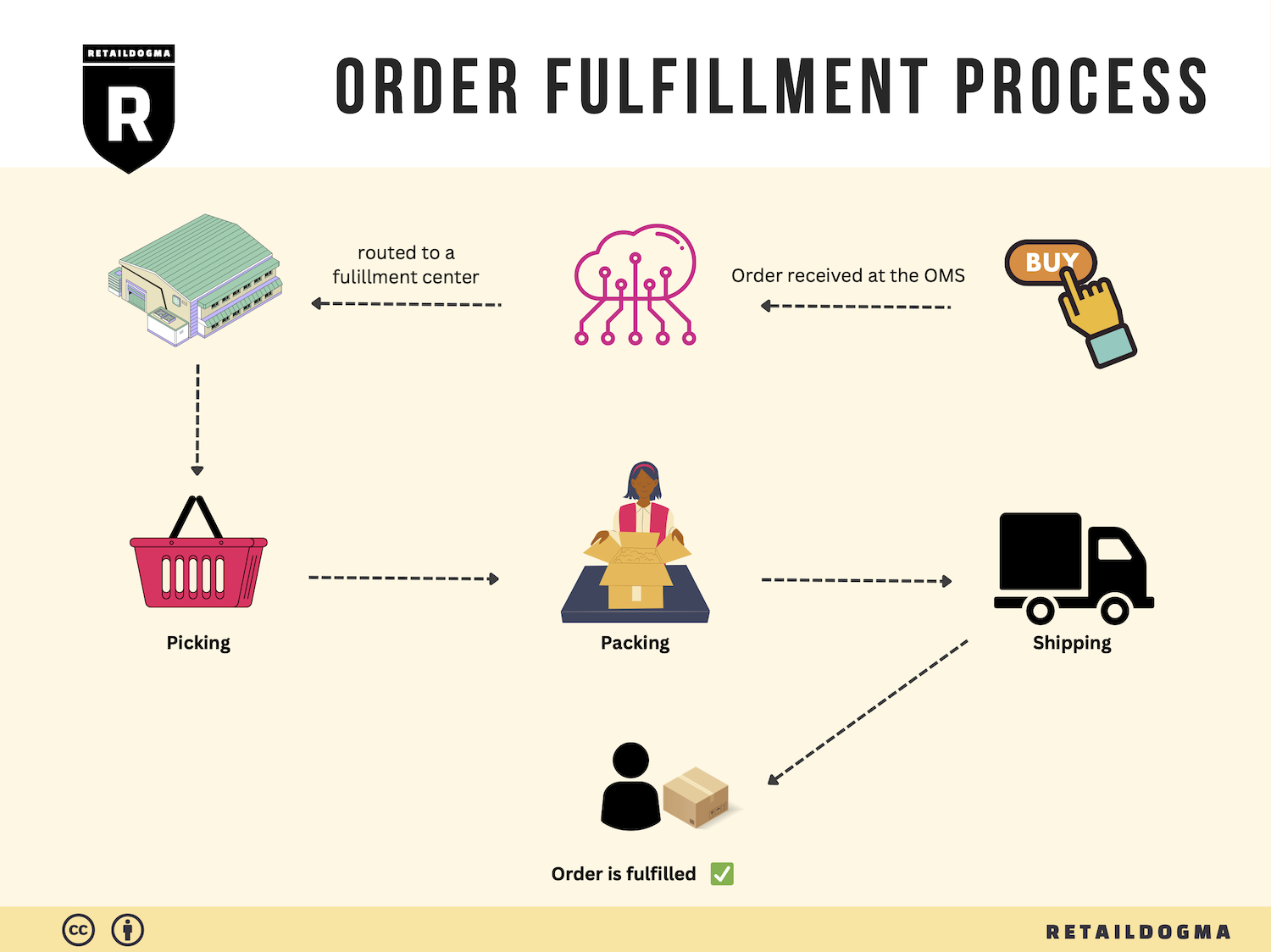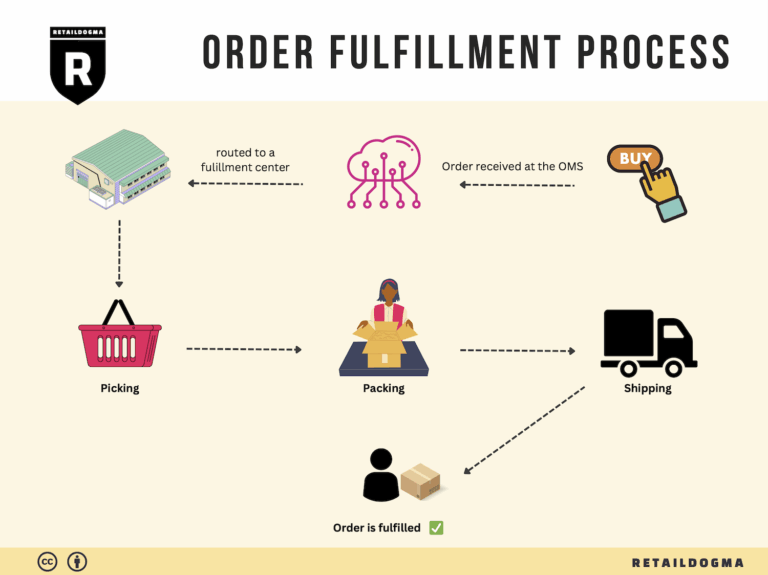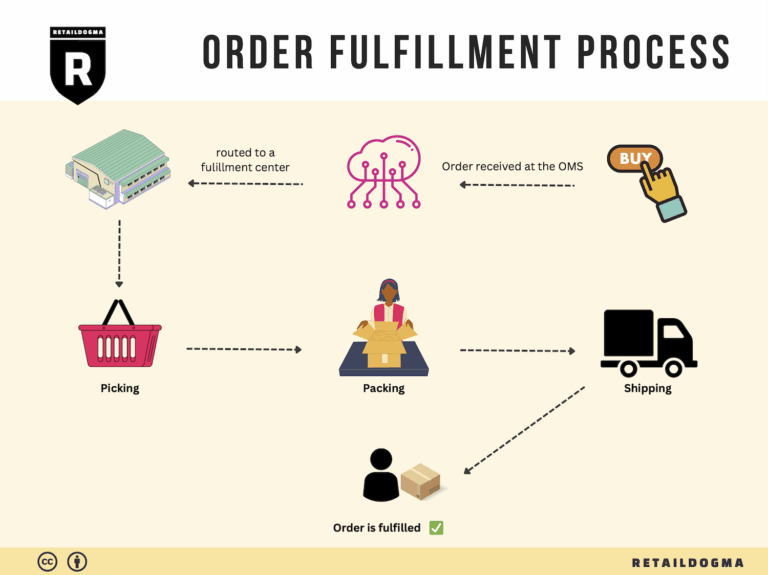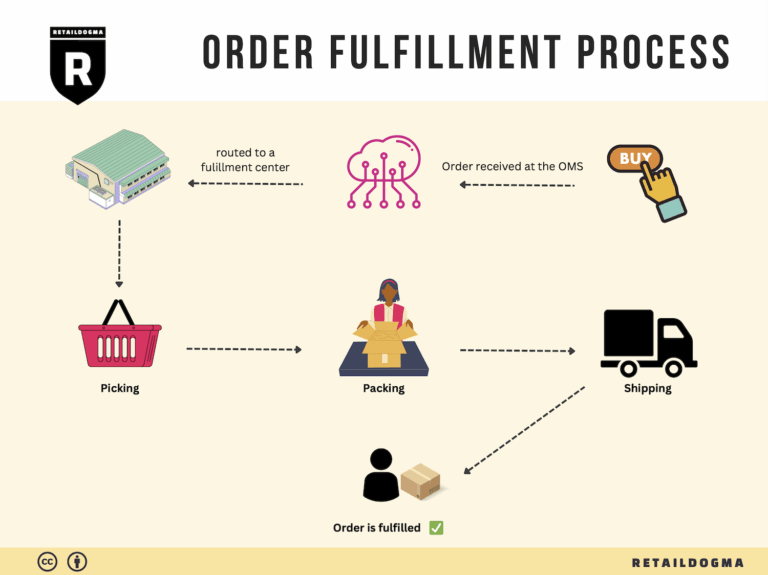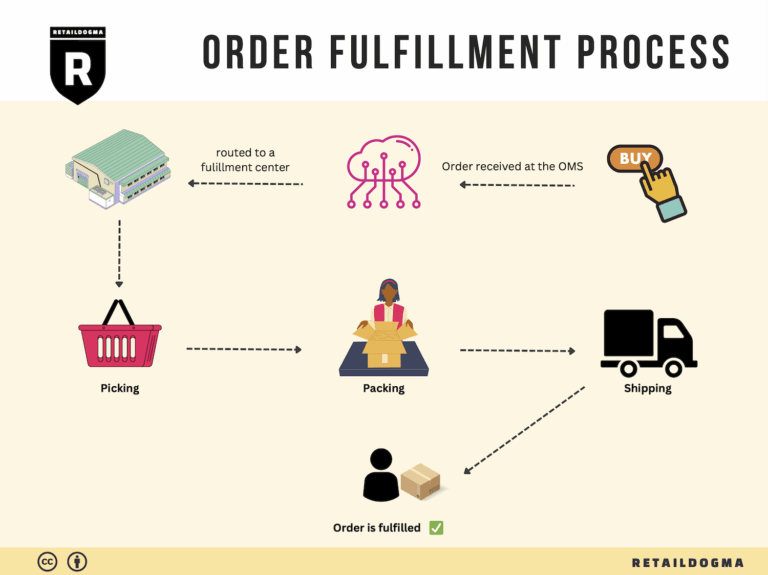Ecommerce Fulfillment Services: The Ultimate Guide (2025)
What is E-commerce Fulfillment? An Introduction for Growing Businesses
Understanding E-commerce Fulfillment
As your online business scales, the excitement of increased orders can quickly turn into the stress of managing packing and shipping. Many growing e-commerce businesses find themselves overwhelmed by the logistics involved in fulfilling customer orders, leading to bottlenecks and potential loss of sales. Fulfillment, simply put, is the process of getting a product from your inventory to your customer’s doorstep. It encompasses everything from receiving inventory and storing it, to picking, packing, and shipping orders, as well as handling returns.
In this guide, we will delve into the various models of fulfillment available to e-commerce businesses. We’ll explore third-party logistics (3PL) providers and Fulfillment by Amazon (FBA), among others, helping you understand the pros and cons of each option. Choosing the right fulfillment model can significantly impact your operational efficiency and customer satisfaction.
Next, we will outline the core services associated with fulfillment, such as inventory management, order processing, and shipping logistics. Understanding these services is crucial as they directly affect your overall fulfillment costs and your ability to meet customer expectations for fast, reliable delivery.
Selecting the right fulfillment partner is another critical aspect we will cover. Factors such as software integration capabilities, strategic warehouse locations, and service flexibility can make or break your logistics operations. We’ll provide practical tips on what to look for when evaluating potential partners, ensuring you choose one that aligns with your business needs and growth goals.
Pricing is an essential consideration in fulfillment, and we’ll break down the various components that contribute to fulfillment costs, including storage fees, pick and pack charges, and shipping expenses. Understanding these costs will empower you to make informed decisions that balance quality service with budget constraints.
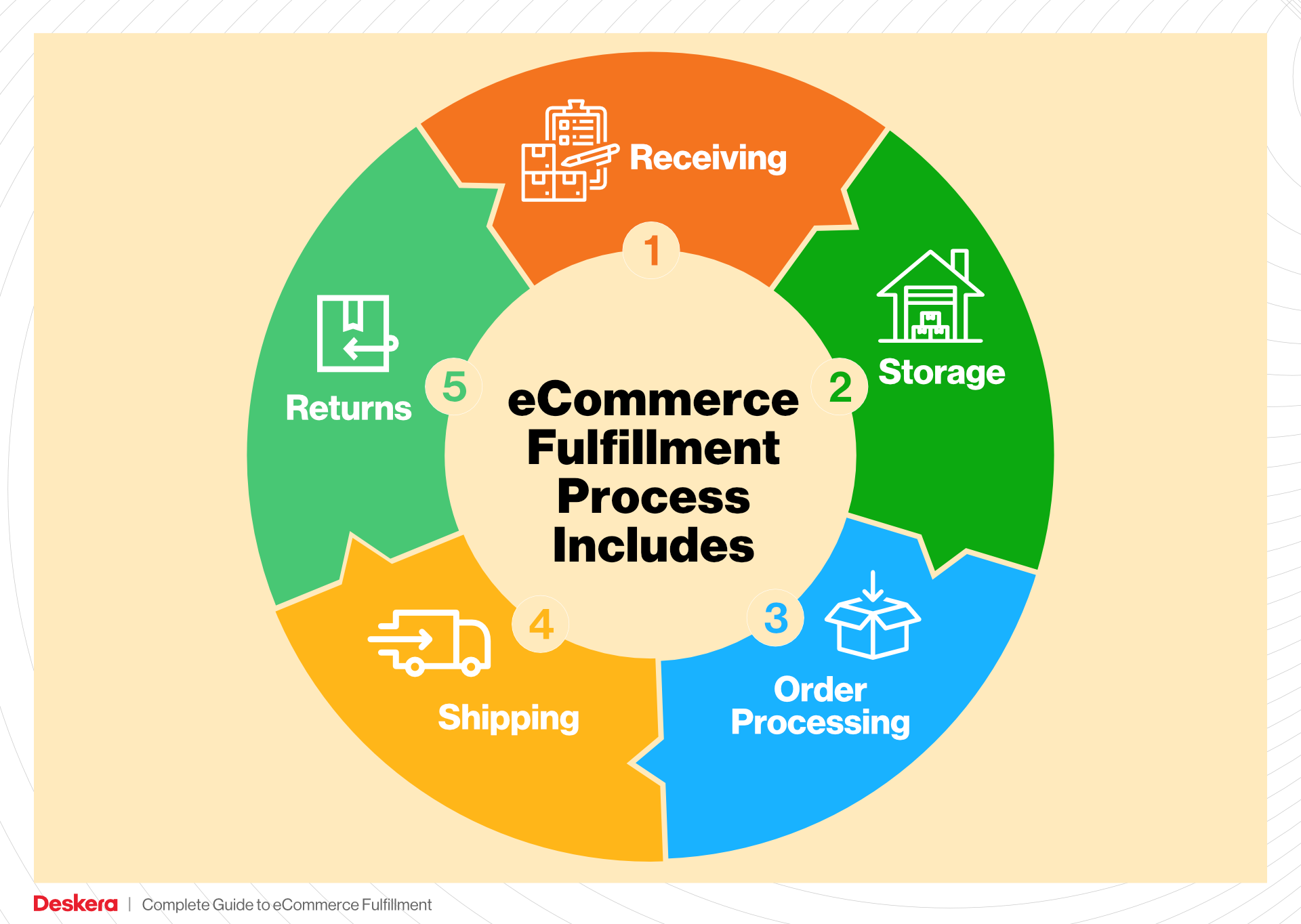
Ultimately, this guide aims to equip e-commerce business owners, operations managers, and entrepreneurs with the knowledge they need to make smart decisions about their logistics. By demystifying the fulfillment process and providing actionable insights, we hope to help you streamline your operations, reduce costs, and enhance customer satisfaction as you continue to grow your business.
What You’ll Learn In This Guide
- What is E-commerce Fulfillment? An Introduction for Growing Businesses
- The Order Fulfillment Process: From ‘Buy’ Button to Customer’s Door
- Comparing Fulfillment Models: In-House vs. 3PL vs. Dropshipping
- A Deep Dive into Amazon FBA: Pros, Cons, and Who It’s For
- Core Services Offered by Fulfillment Centers
- How to Choose a Fulfillment Partner: A 6-Point Checklist
- Understanding Fulfillment Pricing: A Breakdown of Common Fees
- Frequently Asked Questions (FAQs) about Fulfillment
- Conclusion: Is Outsourcing Fulfillment the Right Move for Your Business?
- Important Disclaimer
The Order Fulfillment Process: From ‘Buy’ Button to Customer’s Door
1. Receiving Inventory
The order fulfillment process begins with receiving inventory from suppliers. This step involves the delivery of goods to your warehouse or fulfillment center. Upon arrival, each shipment must be carefully checked against purchase orders to ensure accuracy. This process typically includes inspecting for damages, verifying quantities, and recording relevant details into your inventory management system.
Importance: Proper receiving practices are crucial as they set the foundation for your entire fulfillment operation. Accurate inventory records prevent stock discrepancies that can lead to stockouts, which, according to industry data, cost retailers billions in lost sales annually. Implementing a system for receiving inventory, including SKU (Stock Keeping Unit) assignments, helps in tracking products efficiently and ensures that each item can be easily identified and managed throughout the fulfillment process.
2. Warehouse Storage
Once inventory is received and checked, it is stored in the warehouse. Efficient warehouse storage is essential for optimizing space and improving access to products. Items should be organized logically, often using a bin or shelf system that is easily navigable. This organization may include categorizing products by type, size, or sales velocity.
Importance: Effective warehouse storage reduces the time and effort required for later stages of fulfillment. By maximizing storage efficiency, businesses can minimize costs associated with excess inventory space. Additionally, using advanced inventory management software can help track stock levels and facilitate real-time visibility of inventory, which is essential for preventing overstocking or understocking.
3. Order Picking
When a customer places an order, the next step is order picking, where warehouse staff retrieve the items from their storage locations. This process often utilizes pick lists—documents that outline the items to be gathered for each order, including quantities and locations within the warehouse.
Importance: Order picking is a critical component of the fulfillment process, as it directly impacts delivery speed and accuracy. Errors in picking can lead to customer dissatisfaction and increased return rates. Implementing efficient picking strategies, such as batch picking (where multiple orders are picked simultaneously) or zone picking (where specific warehouse zones are assigned to individual workers), can enhance productivity and reduce fulfillment times.
4. Order Packing
After the items are picked, they are moved to the packing station. Here, products are carefully packed to ensure they arrive at the customer’s door in perfect condition. Packing involves selecting appropriate materials—boxes, bubble wrap, or other protective packaging—based on the items being shipped. It’s also a good practice to include order inserts, such as promotional materials or return instructions.
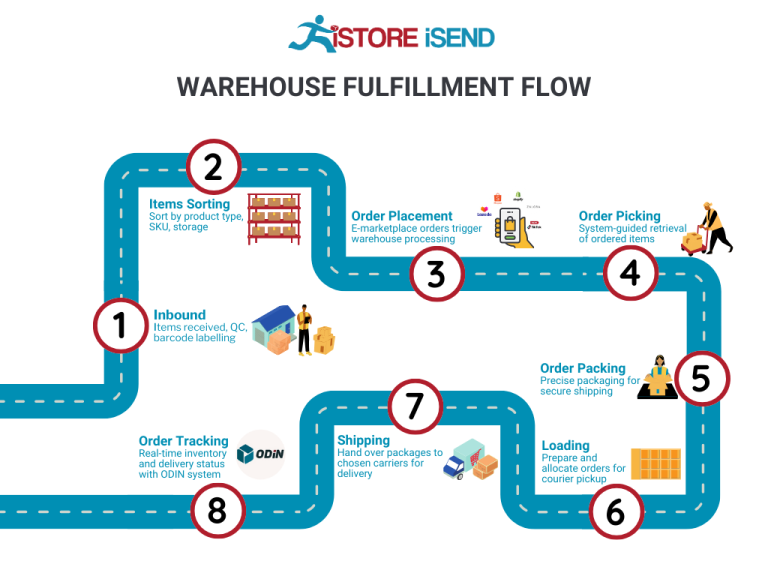
Importance: Packing is vital for protecting products during transit and ensuring a positive unboxing experience for customers. The cost of packing materials can add up, so businesses should consider optimizing packaging sizes and using sustainable materials to reduce expenses. Furthermore, a well-packed order can decrease the likelihood of damage during shipping, thereby minimizing return costs associated with defective or broken items.
5. Shipping & Delivery
The final step in the order fulfillment process is shipping and delivery. Once an order is packed, it is handed over to a shipping carrier for delivery to the customer. Businesses need to choose carriers wisely based on cost, speed, and reliability. It’s crucial to provide customers with tracking information so they can monitor their order’s journey.
Importance: Shipping and delivery are often the most visible aspects of the fulfillment process for customers, directly influencing their satisfaction and likelihood of repeat purchases. With the average e-commerce business spending a significant portion of its budget on shipping, it’s essential to negotiate rates with carriers and explore options like multi-carrier shipping strategies to ensure cost-effectiveness. Additionally, providing options for expedited shipping can cater to customer expectations for faster delivery times.
By understanding and optimizing each of these five steps—receiving inventory, warehouse storage, order picking, order packing, and shipping & delivery—e-commerce businesses can enhance their fulfillment efficiency and ultimately drive customer satisfaction and loyalty.
Comparing Fulfillment Models: In-House vs. 3PL vs. Dropshipping
Fulfillment Model Comparison Table
| Model | Who Handles Inventory | Best For (Business Stage) | Key Advantage | Key Disadvantage |
|---|---|---|---|---|
| In-House Fulfillment | Business itself | Startups to Medium Enterprises | Full control over inventory and processes | High overhead costs |
| Third-Party Logistics (3PL) | Third-party provider | Growing to Large Enterprises | Scalability and reduced operational burden | Less control over inventory management |
| Dropshipping | Supplier | Startups and Small Businesses | Low upfront investment and risk | Lower profit margins and longer shipping times |
In-House Fulfillment
In-house fulfillment involves managing all aspects of inventory, warehousing, and shipping internally. This model is typically adopted by startups and medium-sized enterprises that want to maintain full control over their fulfillment processes. The key advantage of in-house fulfillment is that it allows businesses to oversee their inventory management closely. This means they can implement custom packing processes, manage quality control, and respond swiftly to customer needs and returns. However, this model comes with significant drawbacks, particularly in terms of overhead costs. Businesses must invest in warehouse space, labor, technology, and inventory management systems, which can be financially burdensome. Additionally, as order volumes increase, the complexity of managing logistics in-house can lead to inefficiencies and potential errors, thereby impacting customer satisfaction.
Third-Party Logistics (3PL)
Third-party logistics (3PL) providers are specialized companies that handle the storage, packing, and shipping of products on behalf of businesses. This model is ideal for growing to large enterprises that need to scale their operations without the burden of managing logistics directly. The primary advantage of using a 3PL is the scalability it offers; businesses can easily adjust their storage and fulfillment capabilities based on demand fluctuations. Moreover, 3PLs often have established relationships with shipping carriers, which can lead to better shipping rates and faster delivery times. However, the key disadvantage is the reduced control over inventory management. When businesses outsource their fulfillment, they rely on the 3PL’s systems and processes, which may not always align with their operational standards or customer expectations. Additionally, there can be hidden fees associated with 3PL services, particularly during peak seasons when surcharges may apply.
Dropshipping
Dropshipping is a fulfillment model where the retailer does not keep goods in stock but instead transfers customer orders and shipment details to a supplier, who then ships the products directly to the customer. This model is particularly appealing for startups and small businesses due to its low upfront investment and minimal risk. Retailers can offer a wide range of products without the need for inventory, making it easier to test new markets and products without significant financial commitment. However, dropshipping also comes with notable disadvantages, including lower profit margins and longer shipping times. Since retailers rely on suppliers for fulfillment, they often have less control over product quality and delivery speed, which can lead to customer dissatisfaction. Additionally, competition in the dropshipping space can be intense, often driving prices down and making it challenging to maintain healthy profit margins.
Conclusion
When choosing the right fulfillment model, businesses should carefully consider their current stage of growth, financial resources, and long-term operational goals. In-house fulfillment offers control and customization but can be costly and complex. 3PLs provide scalability and efficiency but at the expense of some control over the process. Dropshipping presents a low-risk entry point into e-commerce but may lead to challenges in quality and profitability. Ultimately, the decision should align with the business’s unique needs and market position, allowing for a balanced approach to fulfillment that supports growth and customer satisfaction.
A Deep Dive into Amazon FBA: Pros, Cons, and Who It’s For
Understanding Fulfillment by Amazon (FBA)
Fulfillment by Amazon (FBA) is a service that allows e-commerce businesses to leverage Amazon’s extensive logistics network to store, package, and ship their products. When a seller opts for FBA, their products are stored in Amazon’s fulfillment centers. Once an order is placed, Amazon takes care of the picking, packing, and shipping process, as well as handling customer service and returns.
How FBA Works
-
Setting Up Your FBA Account: To begin, sellers must create an Amazon Seller Central account and enroll in the FBA program. This process includes agreeing to Amazon’s terms and conditions and providing necessary business information.
-
Product Preparation and Shipment: Sellers prepare their products according to Amazon’s guidelines, which include labeling and packaging requirements. Once prepared, products are shipped to Amazon’s fulfillment centers.
-
Storage: Amazon stores the inventory in their warehouses. Sellers are charged monthly storage fees based on the amount of space their products occupy.
-
Order Fulfillment: When a customer orders a product, Amazon picks, packs, and ships it on behalf of the seller. This process often results in fast shipping times, particularly with Prime members.
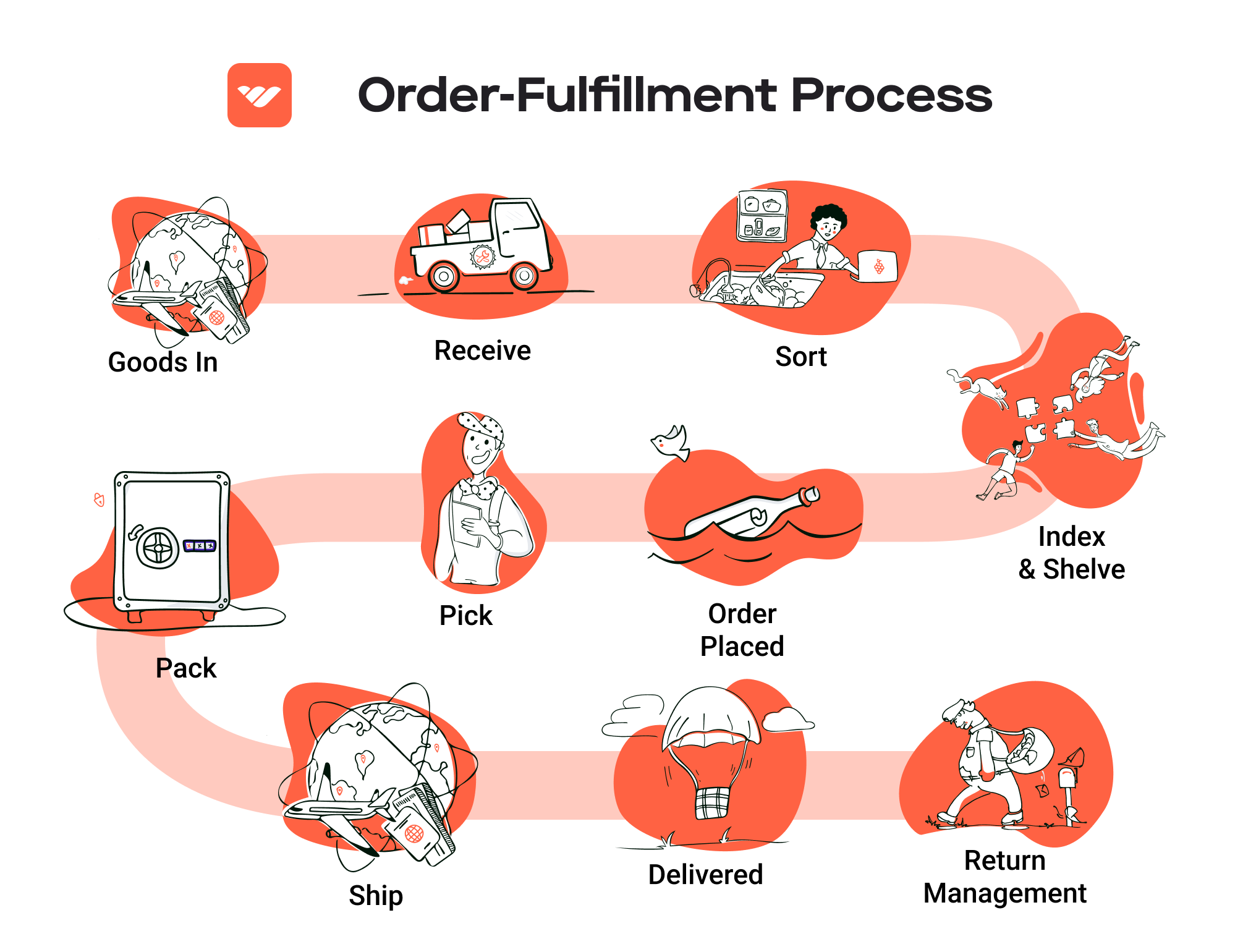
-
Customer Service and Returns: Amazon handles customer service inquiries and processes returns for FBA orders. This alleviates the burden from sellers and enhances customer satisfaction.
Pros of FBA
1. Prime Eligibility
One of the most significant advantages of FBA is that products become eligible for Amazon Prime. This not only increases visibility but also attracts millions of Prime members who prefer products with faster shipping options. The Prime badge can lead to higher conversion rates and increased sales.
2. Customer Trust
Amazon has built a reputation for reliability and customer service. By utilizing FBA, sellers benefit from this trust, as customers often feel more confident purchasing products fulfilled by Amazon due to their established return policies and customer support.
3. Multi-Channel Fulfillment
FBA can be used not just for sales on Amazon but also for orders from other sales channels. Sellers can use FBA to fulfill orders from their own websites or other marketplaces, centralizing their inventory and logistics under one umbrella.
4. Simplified Logistics
FBA allows sellers to focus on growing their business rather than managing the logistics of order fulfillment. Amazon’s robust infrastructure handles the complexities of storage, packaging, and shipping, making it easier for sellers to scale their operations.
5. Access to Amazon’s Technology
By using FBA, sellers gain access to Amazon’s advanced logistics technology and systems, which can enhance inventory management, order tracking, and reporting capabilities.
Cons of FBA
1. High Fees
FBA fees can add up quickly. Sellers incur costs for storage, fulfillment, and additional services, which can significantly cut into profit margins. It’s crucial for sellers to calculate these fees accurately to ensure they price their products competitively while still maintaining profitability.
2. Strict Inventory Rules
Amazon has stringent rules regarding inventory management. Sellers must adhere to guidelines for product preparation and labeling, and failure to comply can result in additional fees or even removal of inventory from Amazon’s warehouses.
3. Commingling Risks
With FBA, products from different sellers may be stored in the same location. This commingling can lead to issues where a seller receives returns that do not belong to them, or they may be held accountable for defective items that were not their own. This risk necessitates careful consideration of product sourcing and quality control.
4. Limited Control Over Shipping
While FBA offers convenience, it also means sellers relinquish control over the shipping process. This can lead to challenges if there are shipping delays, as sellers may receive negative feedback that impacts their seller rating, even if the issues were out of their control.
5. Inventory Storage Fees
Amazon charges storage fees based on the amount of space an inventory occupies. During peak seasons, these fees can increase, which may lead to higher operational costs for sellers who do not manage their inventory effectively.
Who is FBA Best For?
Fulfillment by Amazon is particularly beneficial for:
-
Small to Medium-Sized Sellers: Those who do not have the infrastructure or resources to manage logistics independently can leverage Amazon’s capabilities to scale their operations without significant upfront investment.
-
Sellers with High Sales Volume: Businesses that can maintain a high sales volume can benefit from the economies of scale that FBA offers, making the fees more manageable relative to their revenue.
-
E-commerce Entrepreneurs: New entrepreneurs looking to establish a presence on Amazon can use FBA to gain visibility and credibility quickly, allowing them to compete against established brands.
-
Brands Looking for Expansion: Established brands aiming to expand their reach can use FBA to tap into Amazon’s vast customer base without the complexities of managing their own fulfillment operations.
-
Businesses with Seasonal Products: Sellers who experience fluctuating sales volumes throughout the year can benefit from FBA’s flexibility, using it during peak seasons while managing off-season inventory themselves.
In conclusion, while Fulfillment by Amazon offers substantial benefits that can help e-commerce businesses scale effectively, it also presents challenges that require careful planning and management. Understanding the pros and cons of FBA is essential for sellers to make informed decisions that align with their business goals.
Core Services Offered by Fulfillment Centers
Inventory Management & Warehousing
Inventory management and warehousing are foundational services provided by fulfillment centers. This involves receiving, storing, and maintaining your products in a secure and organized environment. Fulfillment centers utilize sophisticated warehouse management systems (WMS) to track inventory levels, monitor stock movements, and ensure that products are stored efficiently.
Benefits:
-
Optimized Storage: By leveraging the expertise of fulfillment centers, e-commerce businesses can maximize their storage space, reducing the costs associated with excess inventory and minimizing the risk of stockouts. Fulfillment centers often use advanced inventory tracking technology to ensure that stock levels are maintained accurately.
-
Scalability: As your e-commerce business grows, so too does the complexity of managing inventory. Fulfillment centers can scale their services to accommodate fluctuating demand, allowing businesses to avoid the pitfalls of overextending themselves with excess warehousing.
-
Reduced Overhead Costs: By outsourcing inventory management and warehousing, businesses can significantly reduce overhead costs associated with maintaining their own storage facilities, including rent, utilities, and staffing.
Pick and Pack Services
Pick and pack services are integral to the order fulfillment process. Once an order is placed, fulfillment centers locate the products within their warehouse (picking) and package them for shipping (packing). This service is crucial for ensuring that orders are fulfilled accurately and efficiently.
Benefits:
-
Efficiency in Order Processing: Fulfillment centers employ trained staff and automated systems to quickly and accurately pick products from inventory. This not only speeds up the order fulfillment process but also reduces the likelihood of errors, ensuring customers receive the correct items.
-
Cost-Effective Solutions: With pick and pack services, e-commerce businesses can benefit from economies of scale. Fulfillment centers typically handle a high volume of orders, which allows them to offer competitive pricing on labor and materials, ultimately lowering overall fulfillment costs.
-
Custom Packaging Options: Many fulfillment centers offer customizable packaging solutions, enabling businesses to enhance their brand presentation. This can include branded boxes, packing materials, and even promotional inserts, which can improve customer satisfaction and encourage repeat purchases.
Kitting and Assembly
Kitting and assembly services involve the grouping of individual items into ready-to-ship sets or kits. This service is especially beneficial for businesses that sell products that are often purchased together or require assembly before shipping.
Benefits:
-
Enhanced Customer Experience: By providing pre-assembled kits, businesses can simplify the purchasing process for customers, making it easier for them to buy complementary products together. This can lead to increased average order value and improved customer satisfaction.
-
Streamlined Operations: Kitting reduces the time and effort required during the order fulfillment process. Instead of picking multiple items separately, fulfillment centers can assemble kits in advance, leading to faster processing times and reduced labor costs.
-
Inventory Management Simplification: Kitting allows businesses to manage their inventory more effectively by reducing the number of individual SKUs they need to track. This can simplify inventory management and help optimize stock levels.
Returns Management (Reverse Logistics)
Returns management, often referred to as reverse logistics, is a critical service offered by fulfillment centers. This involves handling returned products, processing refunds or exchanges, and managing inventory for items that are sent back by customers.
Benefits:
-
Improved Customer Trust: A well-managed returns process enhances customer trust and loyalty. Fulfillment centers can provide streamlined return solutions, allowing customers to easily return products and receive refunds or exchanges, which can lead to increased customer satisfaction.
-
Cost and Time Efficiency: Handling returns in-house can be time-consuming and costly. By outsourcing this function to a fulfillment center, businesses can save on labor costs and reduce the time it takes to process returns, allowing them to focus on core business activities.
-
Data-Driven Insights: Fulfillment centers often provide analytics on return reasons and patterns, which can help businesses identify issues with their products or services. This data can be invaluable for improving product offerings and minimizing future returns.
In conclusion, leveraging the core services offered by fulfillment centers can significantly enhance the operational efficiency of e-commerce businesses. By focusing on inventory management, pick and pack services, kitting and assembly, and returns management, businesses can streamline their logistics processes, reduce costs, and ultimately improve customer satisfaction.
How to Choose a Fulfillment Partner: A 6-Point Checklist
Location & Warehouse Network
Importance:
The geographic location of a fulfillment partner’s warehouses can significantly influence shipping costs and delivery times. A strategically located warehouse network allows you to reach customers quickly and efficiently, reducing transit times and costs associated with shipping.
Questions to Ask:
– Where are your warehouses located, and how does this align with my customer base?
– What is your shipping coverage area, and do you have the capability to ship internationally?
– How do you manage shipping costs associated with different regions?
– Can you provide case studies or examples of how your location has benefited other clients?
Technology & Integrations
Importance:
In today’s fast-paced e-commerce landscape, having a tech-savvy fulfillment partner is crucial. Effective technology and integration capabilities ensure seamless communication between your store and the fulfillment center, allowing for real-time inventory tracking, order management, and reporting.
Questions to Ask:
– What warehouse management system (WMS) do you use, and how does it integrate with my existing e-commerce platforms (e.g., Shopify, WooCommerce)?
– Can you provide real-time inventory updates, and how do you manage stock levels?
– Do you offer automated order processing and tracking notifications for customers?
– How frequently do you update your technology to keep pace with industry standards?
Specializations (e.g., Cold Storage, Oversized Items)
Importance:
Different businesses have unique fulfillment needs. If you sell perishable goods, oversized items, or specialty products, it’s essential to partner with a 3PL that specializes in handling these specific requirements. This ensures compliance with regulations and optimizes storage and shipping processes.
Questions to Ask:
– Do you have experience handling my type of products (e.g., fragile items, perishables, oversized products)?
– What specific facilities or equipment do you have for specialized storage (e.g., cold storage, climate control)?
– How do you manage compliance with health and safety regulations for specialized items?
– Can you provide examples of clients with similar products and how you met their fulfillment needs?
Scalability & Capacity
Importance:
As your business grows, your fulfillment needs will likely change. A good fulfillment partner should be able to scale with you, providing the necessary capacity to handle increased order volumes without sacrificing service quality.
Questions to Ask:
– How do you manage peak seasons or unexpected spikes in order volume?
– What is your current capacity, and how quickly can you scale to meet increased demand?
– Do you have a plan in place for expanding your warehouse network as your business grows?
– Can you provide flexibility in your contract terms to accommodate changes in order volume?
Pricing and Contracts
Importance:
Understanding the pricing structure and contract terms of your fulfillment partner is essential to ensure that you can maintain profitability. Transparent pricing helps you avoid hidden fees and allows you to budget effectively.
Questions to Ask:
– What is your pricing model (e.g., per order, per item, flat rate)?
– Are there any hidden fees (e.g., for storage, pick and pack, returns)?
– What are the terms of your contract, and is there a minimum commitment period?
– How often do you review and adjust pricing, and how are those changes communicated?
Customer Support & Reviews
Importance:
Reliable customer support can make a significant difference in your day-to-day operations. A responsive and knowledgeable support team can help resolve issues quickly and efficiently, ensuring that your business runs smoothly.
Questions to Ask:
– What customer support channels do you offer (e.g., phone, email, chat)?
– What are your average response times for support inquiries?
– Can you provide references or testimonials from current clients regarding your support services?
– How do you handle fulfillment errors or issues, and what is your process for resolving them?
Conclusion
Choosing the right fulfillment partner is a critical step in scaling your e-commerce business. By considering these six key factors—Location & Warehouse Network, Technology & Integrations, Specializations, Scalability & Capacity, Pricing and Contracts, and Customer Support & Reviews—you can make an informed decision that aligns with your operational needs and business goals. Take the time to thoroughly vet potential partners, ask the right questions, and ensure that they can meet your requirements as you grow.
Understanding Fulfillment Pricing: A Breakdown of Common Fees
Initial Setup Fees
When partnering with a fulfillment provider, many businesses encounter initial setup fees. These fees cover the costs associated with onboarding your account, integrating your inventory management systems, and configuring the software to align with your operations. The setup process can include creating product listings, configuring shipping options, and training your team to use the new system.
How It’s Calculated: Initial setup fees can vary widely based on the complexity of your needs and the provider’s pricing structure. Some providers may charge a flat fee, while others may base it on the number of SKUs you have or the level of customization required. It’s essential to discuss these costs upfront to avoid unexpected charges later.
Receiving Fees
Receiving fees are charged when your inventory arrives at the fulfillment center. These fees cover the labor and resources needed to unload, inspect, and stock your products. Efficient receiving processes are crucial for maintaining a smooth supply chain, as delays can lead to inventory discrepancies and increased costs.
How It’s Calculated: Typically, receiving fees are calculated per pallet, box, or item received. For instance, a provider might charge a fee for each pallet unloaded or a flat rate based on the total volume of goods received. It’s wise to inquire about minimum charges or additional fees for special handling, such as fragile items or temperature-sensitive products.
Storage Fees (per pallet/bin)
Storage fees are incurred for keeping your inventory in a fulfillment center’s warehouse. These fees can significantly impact your overall fulfillment costs, especially for businesses with large inventories or slower-moving products. Most fulfillment providers charge based on the amount of space your inventory occupies, typically measured in pallets, bins, or cubic feet.
How It’s Calculated: Storage fees are usually charged on a monthly basis, with costs varying by provider. For example, a provider might charge a monthly fee per pallet stored, along with potential additional fees for items that remain in storage beyond a certain period. It’s important to understand whether the fees are tiered based on volume, as higher volumes may lead to lower per-unit costs.
Pick & Pack Fees (per item/order)
Pick and pack fees are charged for the labor involved in selecting items from inventory and preparing them for shipment. This process includes locating products, packing them securely, and labeling them for delivery. As order volumes increase, these fees can become a significant portion of your fulfillment expenses.
How It’s Calculated: Providers typically charge pick and pack fees on a per-item basis, with costs ranging from a few cents to several dollars per item, depending on factors like the complexity of the order, the size of the products, and any special packing requirements. Some providers may offer a flat fee per order, which can be advantageous for businesses with varying order sizes.
Shipping Fees
Shipping fees encompass the costs of transporting your products from the fulfillment center to your customers. These fees can vary based on shipping methods, distances, package sizes, and weights. Fast shipping options, such as express delivery, typically come with higher costs, while standard shipping may offer more budget-friendly alternatives.
How It’s Calculated: Shipping fees are often calculated based on a combination of weight, dimensions, and the chosen carrier. Many fulfillment centers offer discounted shipping rates through partnerships with major carriers, which can help reduce costs. It’s crucial to compare shipping options and understand how your chosen provider calculates these fees, as they can significantly affect your overall fulfillment expenses.
Tips for Getting an Accurate Quote
-
Be Transparent About Your Needs: When requesting a quote, provide detailed information about your inventory, order volume, and specific requirements. This allows providers to offer more accurate pricing.
-
Inquire About All Fees: Ensure you ask about all potential fees, including setup, receiving, storage, pick and pack, and shipping. Understanding the complete cost structure helps you avoid surprises.
-
Compare Multiple Providers: Don’t settle for the first quote you receive. Compare offers from multiple fulfillment providers to identify the best fit for your business needs.
-
Request a Breakdown: Ask for a detailed breakdown of all fees in the quote. This transparency will help you understand how costs are calculated and where you might find opportunities to save.
-
Negotiate Terms: Some providers may be willing to negotiate terms or offer discounts for long-term contracts or higher volume commitments. It’s worth discussing your options to find a more favorable agreement.
By understanding these common fulfillment fees and how they are calculated, you can better manage your e-commerce operations and make informed decisions that contribute to your business’s profitability.
Frequently Asked Questions (FAQs) about Fulfillment
1. What are fulfillment costs?
Fulfillment costs encompass all expenses associated with processing and delivering customer orders. This includes inbound shipping, warehousing, labor for picking and packing, outbound shipping, packaging materials, and any associated software or management fees. Understanding these costs is crucial for maintaining profitability in your e-commerce business.
2. How much do fulfillment services cost?
Fulfillment service costs can vary widely depending on several factors, including the size and weight of your products, the volume of orders, and the specific services you require. On average, businesses spend about 8.7% of their yearly expenses on shipping, but fulfillment costs as a whole can range from a few dollars per order to several hundred dollars per month, depending on the complexity and scale of your operations.
3. What is a 3PL?
A 3PL, or third-party logistics provider, is a company that offers logistics services to businesses. This includes warehousing, inventory management, order fulfillment, and shipping. By outsourcing these functions to a 3PL, businesses can focus on core activities like marketing and product development while benefiting from the expertise and efficiency of logistics specialists.
4. What’s the difference between a warehouse and a fulfillment center?
While both warehouses and fulfillment centers are used for storing products, they serve different purposes. A warehouse is primarily focused on storage and inventory management, while a fulfillment center is designed to process orders and ship them directly to customers. Fulfillment centers have the infrastructure and technology to handle order picking, packing, and shipping, making them more suitable for e-commerce businesses.
5. How can I calculate my fulfillment costs?
To calculate fulfillment costs, you can use the following methods:
- Cost per Order (CPO): Divide your total order expenses by the total number of orders received over a specific period.
- Cost per Box (CPB): Divide your total order expenses by the total number of boxes shipped.
- Cost as a Percentage of Sales: Divide total fulfillment costs by net sales and multiply by 100 to see what percentage of your revenue goes to fulfillment.
6. What factors influence fulfillment costs?
Several factors can impact fulfillment costs, including:
- Shipping methods: Different carriers and methods (air, sea, freight) have varying costs.
- Product size and weight: Heavier or larger items typically incur higher shipping and handling fees.
- Storage fees: These depend on the volume of inventory and the specific storage requirements (e.g., refrigeration).
- Labor costs: Fluctuations in labor costs, especially during peak seasons, can affect overall expenses.
7. How can I reduce my fulfillment costs?
To minimize fulfillment costs, consider the following strategies:
- Optimize shipping: Compare rates from multiple carriers and negotiate contracts to secure better pricing.
- Improve inventory management: Use tools to track stock levels and avoid overstocking, which incurs storage fees.
- Streamline packaging: Use efficient packaging materials to reduce weight and size, lowering shipping costs.
- Implement just-in-time inventory: This strategy can help reduce storage costs by shipping products to fulfillment centers only when needed.
8. What are pick and pack fees?
Pick and pack fees are charges applied by fulfillment centers for retrieving items from inventory and packaging them for shipment. These fees typically range from $0.20 to $5.00 per item, depending on the service provider and the complexity of the order. Understanding these fees is essential for accurately calculating your overall fulfillment costs.
9. How do returns impact fulfillment costs?
Returns can significantly affect fulfillment costs, as processing returns involves additional labor and shipping expenses. On average, about 17% of online purchases are returned. To mitigate these costs, businesses can implement strategies such as offering self-service returns, using protective packaging to minimize damage, and creating clear return policies to enhance customer satisfaction and reduce return rates.
10. What should I consider when choosing a fulfillment provider?
When selecting a fulfillment provider, consider the following factors:
- Software integration: Ensure the provider’s system can seamlessly integrate with your existing tools for inventory and order management.
- Location: A provider with warehouses close to your customer base can reduce shipping costs and improve delivery times.
- Scalability: Choose a provider that can grow with your business and handle fluctuations in order volume, especially during peak seasons.
- Reputation and reliability: Research reviews and testimonials to ensure the provider has a track record of timely and accurate order fulfillment.
Conclusion: Is Outsourcing Fulfillment the Right Move for Your Business?
Evaluating the Benefits of Outsourcing Fulfillment
Outsourcing your fulfillment can be a game-changer for your e-commerce business. One of the primary advantages is the significant time savings it offers. By leveraging a third-party logistics (3PL) provider, you can focus on core business activities—such as marketing and product development—rather than getting bogged down by the logistics of storage, packing, and shipping.
Additionally, outsourcing provides the scalability your business needs as it grows. A fulfillment partner can easily adjust to fluctuations in order volume, ensuring that you can meet customer demand without the stress of managing increased labor or warehouse space on your own. This flexibility is crucial during peak seasons or promotional events when order volumes can spike dramatically.
Moreover, 3PL providers bring specialized expertise to the table. They have established networks, advanced technology, and industry knowledge that can help streamline your fulfillment processes, reduce costs, and improve customer satisfaction. This expertise can be particularly beneficial for businesses that may lack the resources to manage logistics effectively in-house.
However, the success of outsourcing fulfillment hinges on selecting the right partner. It’s vital to assess potential providers based on factors such as software integration capabilities, strategic warehouse locations, and their track record in managing similar businesses.
To determine if outsourcing is the right move for your business, conduct an audit of your current shipping process. Analyze your fulfillment costs, delivery timelines, and customer feedback. This assessment will provide valuable insights into whether a fulfillment partner could enhance your operational efficiency and support your growth ambitions. Taking this proactive step can set your business on the path to greater scalability and success.
Important Disclaimer
⚠️ Important Disclaimer
The information in this guide is for educational purposes. Fulfillment services, pricing, and platform features change frequently. Always conduct your own due diligence and consult with providers directly before making business decisions.
